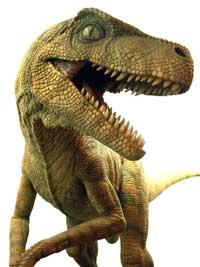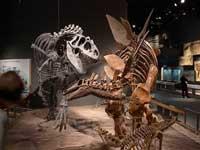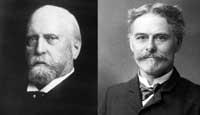Two names for the same dinosaur

In 1887 an apatosaur fossil was first discovered. Two years later brontosaur was discovered. However, from 1903, both were called apatosaurs officers, when it was shown that they were the same species. The first change does, but not the only one.
The paleontologist Michael Benton of the University of Bristol has investigated the names of dinosaurs for four years. Thus, 16% of the 1,047 species names registered between 1824 and 2004 are duplicated, that is, two names are used for the same species, and 32% are defective. It has come to the conclusion that there are inaccurate descriptions of these species, that names are repeated or that there is not enough material to investigate.
Why does that happen? Paleontologists know the danger of their work. In fact, many fossils do not appear whole, which generates identification problems. Therefore, on many occasions, when discovering a new species of dinosaur, it is baptized with a new name. However, when compared to previously found species, it is observed that it is the same species or a young member of it.
Identification ranking
With the study data, Benton has developed identification, inventiveness and efficiency rankings. According to them, the most identified species has been the paleontologist Othniel Marsh. In total he identified 80 species between 1870-1899. At that time he was named King of the Dinosaurs of the United States. But many times it did not succeed: of the total species recorded, after the revisions, only 23 remain, 29% of the total.

However, Chinese scientist Dong Zhiming has achieved a record of success. Dong recorded 42 species of dinosaurs between 1972 and 2004. Of these, 27 remain, being the mark of the greatest number of hits in absolute values. The percentage of Dong hits is 64%.
Dong, however, has not achieved the top spot in efficiency. Despite the largest number of invented species, among which he recorded were names with defects. In the efficiency ranking, the Chinese Xi Xung has advanced. Of the 24 species identified by Xu between 1999-2006, 24 have been approved, that is, 100%. Bear in mind that Xu works three species per year.
Current species
Regarding the number of defects observed after the investigation, Michael Benton highlights the need to be careful in the identification of species. He also did not expect to find so many mistakes. After correcting the errors and discarding the useless names, Benton has annulled about 500 species.

However, these errors are more evident in the 19th century. Among the dinosaur species recorded in the 19th century, the search for dinosaur fossils became competition. In the USA a great competition arose: The competition between the prestigious paleontologists Othniel Marsh and Edward Drinker Cope is known as “bone war”. As seen before, Marsh won with 80 species — Cope discovered 56. Research has shown that fewer and fewer errors have occurred in recent decades and that identification work has been increasingly demanding.
Published in 7K.
Buletina
Bidali zure helbide elektronikoa eta jaso asteroko buletina zure sarrera-ontzian











